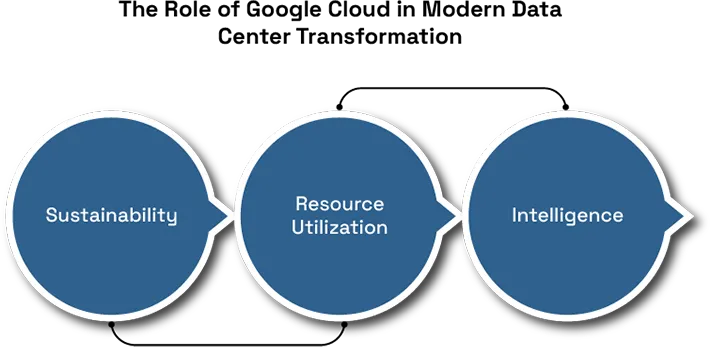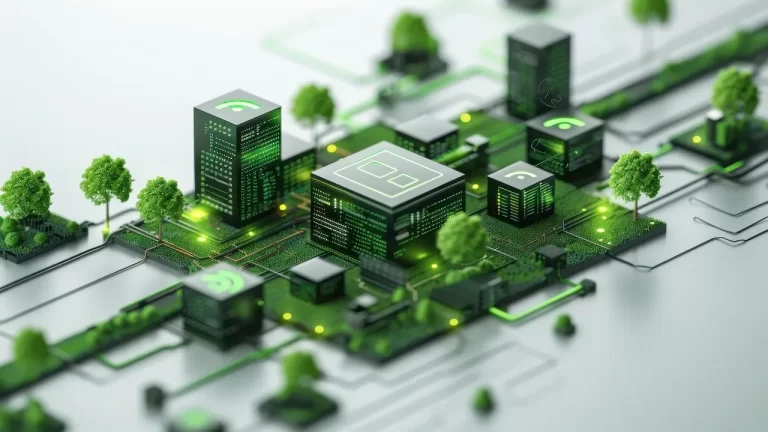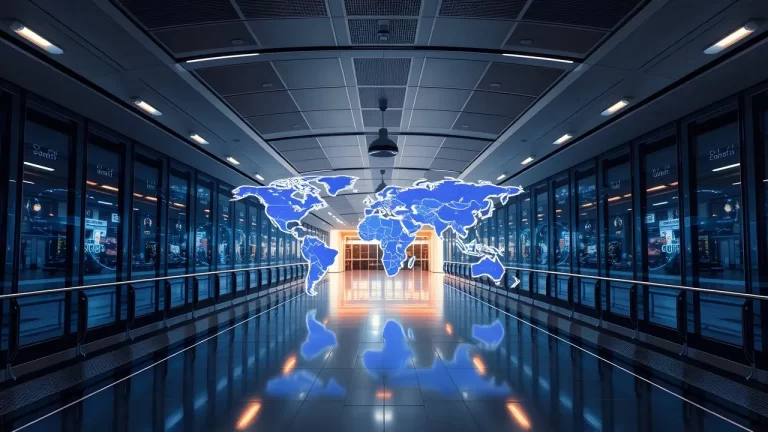In an age where digital transformation is no longer an option but a necessity, Google Cloud stands out as a central force driving the modernization of the global data center landscape. As the data requirements have grown, the concept of data centers changing, along with awareness for efficiency and availability, enterprises are considering their IT architecture. Google Cloud is playing a significant role by providing scalable, secure, and intelligent cloud services that help redefine how data center architecture in cloud computing is built and operated.
It is not just about constructing infrastructures, it is the efficient utilization of resources of a proactive approach towards sustainability and the creation of systems that are acceptable to disturbances that are naturally inherent in our environment today.

The Changing Face of Data Centers
Over the past decade, the main trends in the data center industry have been flexibility, virtualization, and sustainability. The traditional IT models which are primarily based on hardware implementation are now shifting to more virtual models in which different data centers of organizations can be deployed easily and one can get real-time analysis and at the same time working cost is also less.
Google Cloud gives a broad set of AI-driven services, edge computing facilities, and global reach that helps businesses to migrate from traditional architectures to quite innovative ones. When it comes to accepting the public cloud data centers or hybrid architecture, the need of the hour is evidenced reliability with the scale factor.
Smart Infrastructure, Smarter Operations
At the heart of this transformation is Google Cloud’s investment in infrastructure intelligence. Google also employs services that are made on the specific chips like Tensor Processing Unit (TPU) and energy optimized systems that reduces latency and optimizes performance.
This is more relevant now given the actual business issues such as Microsoft outages, CrowdStrike situations, or even having to deal with a loss of frontier internet connection. Google Cloud’s distributed design helps mitigate these disruptions through built-in redundancies and intelligent load balancing.
Moreover, Google’s commitment to data center sustainability trends is unmatched. Their goal to run entirely on carbon-free energy 24/7 by 2030 demonstrates a deep alignment with both global environmental goals and business continuity concerns. This commitment influences how modern datacenters in cloud computing are designed focusing not just on uptime, but on environmental impact as well.
The Role of AI and Machine Learning
Google Cloud leverages its leadership in artificial intelligence to revolutionize data center operations. AI is embedded in everything from optimizing cooling systems to predicting failures before they happen.
Tools like Grok AI, developed by AI (a separate AI company but part of the AI ecosystem), inspire a broader industry move toward AI-enabled operations. These technologies influence how cloud data centers function in cloud computing, resulting in more automation, fewer human errors, and better decision-making processes.
By integrating AI with cloud networking understanding cloud based data center networks, Google Cloud ensures that traffic flows efficiently, systems self-heal, and latency is minimized even under heavy loads.

From Physical to Virtual
The shift from hardware-driven models to a more virtualized environment has gained traction. In Google Cloud, customers can utilize computing, Virtual machine containers as well as Kubernetes clusters where specialized control over resources and expenditure can be achieved.
This virtualization enables the hybrid and multi-cloud approach to reduce risks from service disruption, such as that caused by a Microsoft outage today or an AWS outage. Google Cloud provides solutions that allow for an efficient backup, real-time VM migration, and failover more especially during disasters.
A Blueprint for the Future
Google Cloud is redefining the integration of data center and cloud computing by going far beyond traditional application hosting. It’s creating a next-generation foundation where systems are self-managing, adaptive, and resilientdesigned to meet the evolving demands of modern enterprises. Through features like smart workload placement and policy-based automation, Google Cloud is offering blueprints that organizations now consider essential for staying ahead of emerging data center trends.
Such blueprints are the zero-trust security models that permit the access of systems only through verification, modular designs that allow for faster and scalable deployment, and resource forecasting, which improves performance and minimizes downtimes. Furthermore, the two proposals of IoT and edge processing bring computation closer to data creation sites and thereby increasing efficiency. Altogether, these improvements are impacting data centre design in cloud computing where everything, including the networking and storage, is designed to be rapidly deployable, power efficient, and secure.
Real-World Applications
Across industries from healthcare and finance to logistics and education, Google Cloud is proving its worth. Enterprises are not only hosting applications but analyzing massive data sets, training machine learning models, and automating operations using Google’s platform.
During periods of global strain, like internet disruptions or outages, companies using Google Cloud have maintained higher levels of uptime and service availability. These are critical when facing infrastructure failures similar to Microsoft outage events that can disrupt millions of users simultaneously.
Navigating the Challenges
It is important to note that these successes did not come without some Issues. Things like integrating old and new systems, managing costs on the cloud, and dealing with issues of data privacy laws are some of the problems that people face. However, Google Cloud addresses these with intelligent billing, region-specific services, and extensive documentation that supports smooth transitions.
Also, in an era where data center and cloud computing are inseparable, Google’s robust support for hybrid deployments makes it easier for businesses to accept the cloud at their own pace.
Final Thoughts
Google Cloud is not what you apply to your business; it is an ideological change. Currently, digital needs are increasing, and operational risks are becoming even more apparent so what is necessary is that the platforms are not only great but also intelligent, safe, and environmentally friendly. Google Cloud does this in a way that fulfills all of these measures as it aims to redefine the cloud computing data center outlook.
Efficient infrastructure, perfect virtualization, and heavy focus on energy sources proficiency establishes Google Cloud as one of the cloud computing centers of this era. It’s not only about locality but also processing and handling of data in the most wise and ethical way possible.








